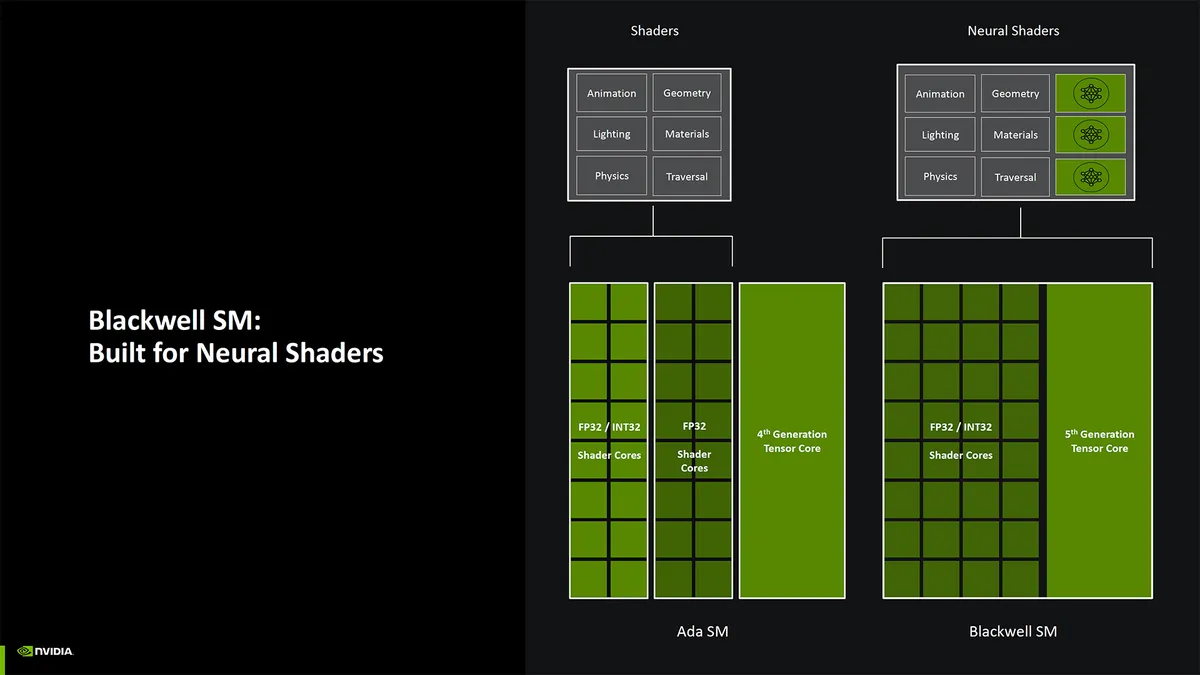You are using an out of date browser. It may not display this or other websites correctly.
You should upgrade or use an alternative browser.
You should upgrade or use an alternative browser.
Poll: Expected Generational Uplift on GPUs?
- Thread starter iQuasarLV
- Start date
Schmendrick
Banned
Pretty much in line with the efficiency gains of the node shrink. About 15-20% would be my guess. I'm not expecting the architecture improvements to do much.
Ofc there will be new AI shenanigans that will maybe come into play a few years after.
Edit: oh you were talking about the consoles, mb. There I'd expect at least factor 2 and also at least 200 bucks above the old base for the price.
Ofc there will be new AI shenanigans that will maybe come into play a few years after.
Edit: oh you were talking about the consoles, mb. There I'd expect at least factor 2 and also at least 200 bucks above the old base for the price.
Last edited:
Insane Metal
Member
At least 60% gen on gen is a good start IMO.
Digital-Aftertaste
Member
I am thinking that at least where Nvidia is involved, we're going to have a last hurrah regarding dlss before we get a spiritual 1080ti spiritual successor.
Radical_3d
Member
We are in the twenties. Expecting more than 20% to 30% is to be a blessed naive boy.
iQuasarLV
Member
The 9070 XT is 87% above the 6700 XT, so some 43% gen over gen.We are in the twenties. Expecting more than 20% to 30% is to be a blessed naive boy.
Gameplay Gods Bless
Member
20% is the new normal unless the chips are 1) ok a new node, 2) big chips like the 4080 and 4090 and 3) expensive like the 4080 and 5090.As the title asks, what is a PC gamer's expected uplift, in raw rasterization, each generation from a GPU to conclude it is worth the money you will spend? This is asking assuming an even upgrade 70 to 70 series, 80 to 80 series.
If it meets those 3 then the gains will be good if not then they may not. Even the 5090 couldn't reach 40% gains at 4k ultra because it's missing the 1st requirement. Next gen the gains will be better (because 60 series will be on a manufacturing node) but only for the more expensive cards.
Sanepar
Member
I hope udna flagship is 60-70% faster than 9070 xt.As the title asks, what is a PC gamer's expected uplift, in raw rasterization, each generation from a GPU to conclude it is worth the money you will spend? This is asking assuming an even upgrade 70 to 70 series, 80 to 80 series.
LavitzSlambert
Member
I expect we will see minimal uplift, if not regression, in pure raster performance as the industry continues its shift toward ray/path tracing, and usage of AI upscaling. Chip designers are going to use that extra die shrink space to pack in other types of cores.
Hoddi
Member
We're not gonna see 2x generational performance uplifts again. But I also refuse to upgrade for less than a 2x uplift considering how much it costs these days.
I upgraded my 2080 Ti to 5080 at launch and can't say it was worth it at ~2.5x for 1100USD. Which is pretty crazy given there's almost 7 years between these cards.
I upgraded my 2080 Ti to 5080 at launch and can't say it was worth it at ~2.5x for 1100USD. Which is pretty crazy given there's almost 7 years between these cards.
Magic Carpet
Gold Member
The exact same performance for more money.
It's a gold mine that is running out of nuggets to dig up.
I expect zero gains and possibly even backwards loss.
It's a gold mine that is running out of nuggets to dig up.
I expect zero gains and possibly even backwards loss.
Black_Stride
do not tempt fate do not contrain Wonder Woman's thighs do not do not
~35%
Gen on gen
This way if I skip a generation im getting a truly sizeable upgrade buying in the same class.
Also the xx70 should match the last gen xx90..
How is it possible the 5080 couldnt beat the 4090?
Gen on gen
This way if I skip a generation im getting a truly sizeable upgrade buying in the same class.
Also the xx70 should match the last gen xx90..
How is it possible the 5080 couldnt beat the 4090?
Black_Stride
do not tempt fate do not contrain Wonder Woman's thighs do not do not
I expect we will see minimal uplift, if not regression, in pure raster performance as the industry continues its shift toward ray/path tracing, and usage of AI upscaling. Chip designers are going to use that extra die shrink space to pack in other types of cores.
You think they are gonna put more Tensor and RT cores per SM?
Noting that number of Tensor cores per SM has actually gone down since Turing.
Worse still if you put more RT cores per SM you are gimping everything else the SM can do including the Tensor space as the RT core is a fixed block in the SM.

They are just going to change how the SM is used.

Black_Stride
do not tempt fate do not contrain Wonder Woman's thighs do not do not
expected 60% over previous gen
that is the real jump.
20% only if it's refresh
When has that ever happened in modern history?
960 to 1060. Modern enough for boomers like meWhen has that ever happened in modern history?
Black_Stride
do not tempt fate do not contrain Wonder Woman's thighs do not do not
960 to 1060. Modern enough for boomers like me
Ohhh Pascal......so good.
But an outlier specially the 960 v 1060.....Pascal was about 40-45% gen on gen.
